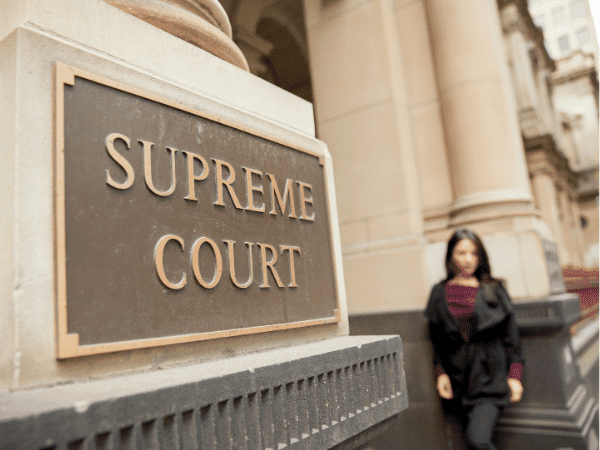On June 28, 2024, the U.S. Supreme Court issued a decision in Loper Bright Enterprises v. Raimondo and Relentless Inc. v. Department of Commerce (consolidated cases). The Court overruled its 1984 decision in Chevron, U.S.A. Inc. v. Natural Resources Defense Council Inc., which held that courts should defer to federal agencies to interpret ambiguities and gaps in the laws that the agencies implement (known as Chevron deference).
Impact on Employers
Chevron deference has meaningful influence on the interpretation and enforcement of employment laws. Federal employment and other administrative agencies, including the U.S. Equal Employment Opportunity Commission, the Occupational Health and Safety Administration, the U.S. Department of Labor (“DOL”) and the National Labor Relations Board, have relied on Chevron deference in issuing and defending agency interpretations.
As a result of the Supreme Court’s ruling, federal agencies will not be able to rely on Chevron deference in existing litigation, including lawsuits that have been filed to challenge the DOL’s independent contractor and overtime rules, and may be subject to additional legal challenges regarding existing rules. Consequently, some experts have proposed that federal agencies may also issue fewer regulations and take more moderate positions in the regulations they issue in the future, and this restrain may hinder future attempts to wrangle certain public policy issues.
Employer Action Items
- In the short-term, there are no immediate consequences for employer plan sponsors. The ruling from the USSC does not require the repeal or amendment of any existing rulemaking; however, future rulemaking will be subject to the new standards respecting drafting ambiguities and the potential for judicial review. Employers must continue to rely on and adhere to agency regulations unless, and until, a court of appropriate jurisdiction elects to overturns any federal rulemaking, which is, undoubtedly, a lengthy road ahead.
- As a direct consequence of the recent ruling, employers and plan sponsors may see the federal administrative agencies attempting to “shore up” existing regulations via additional rulemaking, amendments to existing rules, or via the publication of supplemental sub-regulatory guidance clarifying certain provisions of existing regulations. Further, contested agency rulemaking will be hindered as legal disputes regarding the interpretation and scope of authority of the federal agencies are tested by private action players. Lastly, the Supreme Court’s ruling may require self-funded employers to be nimble and fast in responding to various and novel health and welfare federal mandates and federal regulatory approaches to the implementation and preservation of same.
Summary
Congress has the authority to pass laws that govern employers, and federal agencies have the authority to enforce those laws. To fill in any gaps or to remedy any ambiguities, federal agencies may issue detailed guidance on how the laws should be interpreted and applied; this is referred to as the federal rulemaking (or “regulatory”) process. For example, agencies may publish informal guidance, issue opinions, or publish formal regulations. Under the doctrine of Chevron, courts are directed to defer to such agency guidance where the statute is ambiguous, and the agency’s interpretation is reasonable.
In Loper and Relentless, the plaintiffs argued that Chevron should be overruled. The plaintiffs contended that courts should have the authority to interpret ambiguous laws and should have no obligation to adhere to federal agency guidance.
Supreme Court Ruling
The U.S. Supreme Court overruled Chevron in a 6-3 decision. The U.S. Supreme Court held that the Administrative Procedure Act requires courts to exercise their independent judgment in interpreting the law, and consequently, “courts may not defer to an agency interpretation of the law simply because the statute is ambiguous.” However, the U.S. Supreme Court noted that the holdings of prior cases that relied on Chevron remain lawful and may not be overturned solely because they relied on Chevron.
Additional Resources
Loper Bright Enterprises, Et Al v. Raimondo, Secretary of Commerce, Et Al, 603 US _ (2024). https://www.supremecourt.gov/opinions/23pdf/22-451_7m58.pdf
For more information
We’re ready when you are. Get in touch and a friendly, knowledgeable Baldwin advisor is prepared to discuss your business or individual needs, ask a few questions to get the full picture, and make a plan to follow up.
This document is intended for general information purposes only and should not be construed as advice or opinions on any specific facts or circumstances. The content of this document is made available on an “as is” basis, without warranty of any kind. The Baldwin Insurance Group Holdings, LLC (“The Baldwin Group”), its affiliates, and subsidiaries do not guarantee that this information is, or can be relied on for, compliance with any law or regulation, assurance against preventable losses, or freedom from legal liability. This publication is not intended to be legal, underwriting, or any other type of professional advice. The Baldwin Group does not guarantee any particular outcome and makes no commitment to update any information herein or remove any items that are no longer accurate or complete. Furthermore, The Baldwin Group does not assume any liability to any person or organization for loss or damage caused by or resulting from any reliance placed on that content. Persons requiring advice should always consult an independent adviser.
The Baldwin Group offers insurance services through one or more of its insurance licensed entities. Each of the entities may be known by one or more of the logos displayed; all insurance commerce is only conducted through The Baldwin Group insurance licensed entities. This material is not an offer to sell insurance.






